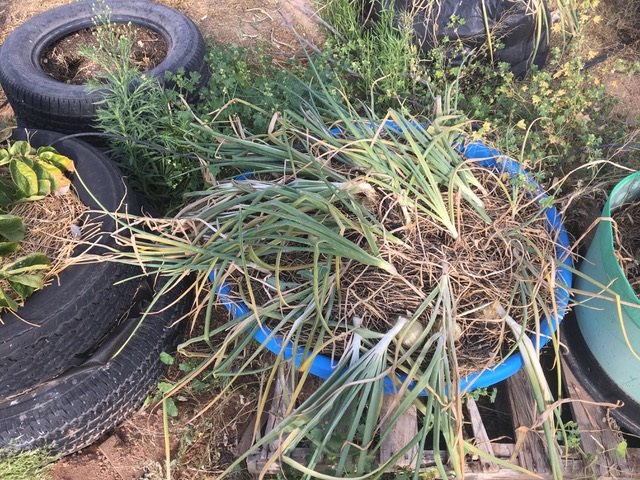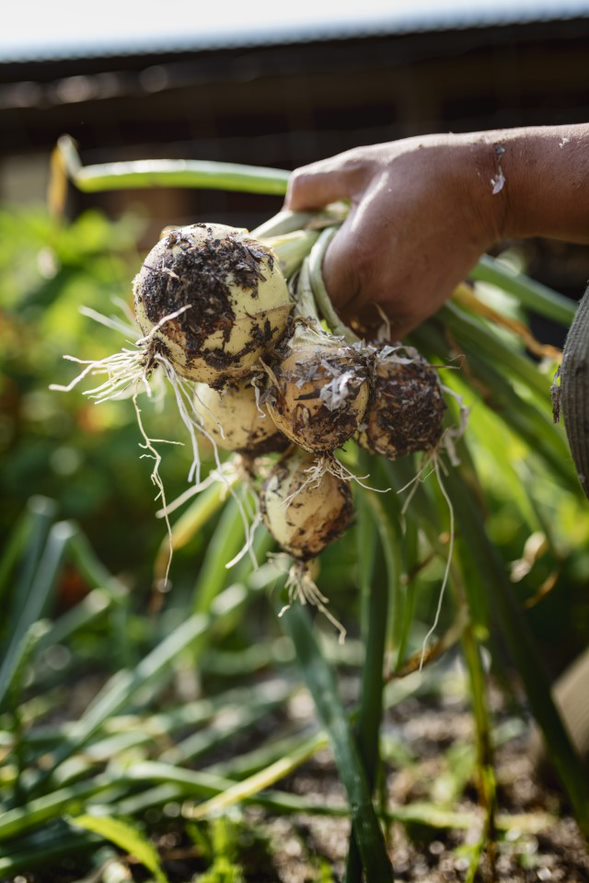
Perhaps you’ve had the same experience: onion bulbs from the big box stores that never develop into the big, dry ones like you buy in the grocery store. Here’s how to grow your own.
Choose carefully
Onions can be started from seeds or purchased as starter plants. Whether seed or plant, the proper choice of onion is important. Why? There are short-day onions, medium-day onions, and long-day onions. So, gardeners must consider where they live. The short-day onion grows best in the Arizona central desert because they grow here during the winter when days are shorter.
Bulbs or plants purchased from big box stores are usually not short-day growers, so ordering online is best. One reliable source I use for plants is Dixondale Farms.
Growing seeds are more challenging and must be started indoors six to eight weeks before planting outdoors, but they are much cheaper. For seeds, I have ordered from True Leaf Market and Baker Creek Heirloom Seed.
Planting and watering
For the Maricopa area, the recommended planting time for onions is around Jan. 1. I grow onions in kids’ swimming pools with small holes drilled in the bottoms. Fill the pool with a rich, loose compost soil. For growth nutrition, I put a little bone meal in each hole before I plant.
Plant onions 1 inch deep but no deeper, and at least 4 inches apart. Onions like a lot of water so get them thoroughly wet after planting. Onions roots also aren’t deep, so keep the soil at the base slightly damp. Mulching to retain water will help keep onions from drying out. I usually water every other day and recommend a drip system rather than overhead watering, which can cause disease. Water more as you get closer to harvest. When the onions start falling over, stop watering. Let the soil dry out before harvesting.
 Fertilize?
Fertilize?
Some sources say to fertilize with ammonium sulfate every 3-4 weeks, but I use bone meal and a good compost soil and that works well for me. But if you choose to fertilize, stop when the ground starts to crack and the onions begin to push the soil away so you can see the bulb starting.
Harvest
When the onions turn brown and yellow and fall over, it’s time to harvest. To prevent rot, onions typically would be dried, or cured, in a field but it’s too hot in Arizona. I put them on bread racks and dry them maybe 2-3 weeks indoors until the tops are dry. Then I put them in a cool, dark place to store.
Even in the Arizona desert, onions are easy to grow and tasty to eat, so give them a try.
Reba Cook is a Master Gardener.
InMaricopa.com/Columnists
This column was first published in the January edition of InMaricopa magazine.





![MHS G.O.A.T. a ‘rookie sleeper’ in NFL draft Arizona Wildcats wide receiver Jacob Cowing speaks to the press after a practice Aug. 11, 2023. [Bryan Mordt]](https://www.inmaricopa.com/wp-content/uploads/2024/04/cowing-overlay-3-218x150.png)



![Maricopa’s ‘TikTok Rizz Party,’ explained One of several flyers for a "TikTok rizz party" is taped to a door in the Maricopa Business Center along Honeycutt Road on April 23, 2024. [Monica D. Spencer]](https://www.inmaricopa.com/wp-content/uploads/2024/04/spencer-042324-tiktok-rizz-party-flyer-web-218x150.jpg)


![Alleged car thief released without charges Phoenix police stop a stolen vehicle on April 20, 2024. [Facebook]](https://www.inmaricopa.com/wp-content/uploads/2024/04/IMG_5040-218x150.jpg)




